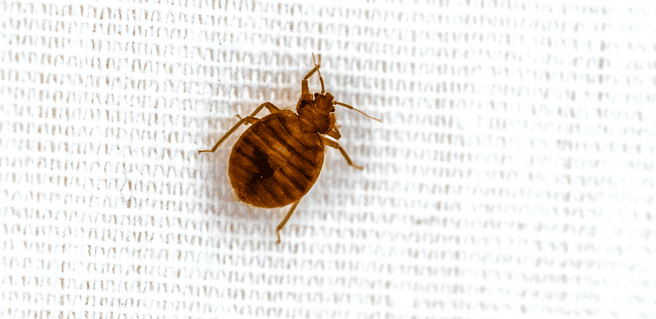“Goodnight, sleep tight, don’t let the bed bugs bite.” Many of us have learned from an early age about the horrors of bed bugs.
Bed bugs are great hitchhikers. They can move from an infested site to your new home by traveling on furniture, bedding, luggage, boxes and clothing.
Although they typically feed every 5 to 10 days, they can be quite resilient; they are capable of surviving several months to a year without feeding. YIKES!
Tips to prevent bed bug infestation
- Hotels and travel. Now that everyone is traveling and out and about again, ensure that you don’t bring unwanted guests home in your suitcase. Start with inspecting the luggage rack in your hotel room for bed bugs or signs of bed bugs. You’ll also want to check the mattress and sheets.
- Thrift shopping? Inspect chairs, beds, couches and bedding from secondhand stores or flea markets before purchasing and inviting unwanted pests into your home.
- Cover it up! Cover your mattress and box springs for maximum effectiveness. Protective mattress covers can eliminate hiding spots. Hint – light colors make spotting these pesky pets easier. You can even purchase coverings that are pre-treated with pesticides for bed bugs.
- Feel like decluttering? By all means, don’t become a hoarder. Reducing clutter eliminates places for bed bugs to hide.
- Keep it clean! Frequent vacuuming will help to remove any successful hitchhikers.
- Laundry day? If you frequently use a laundry mat, use precautions! Transport items to be washed in plastic bags (if you have an active infestation, use a new bag for the journey home). Remove from the dryer, place the items directly into the bag, and then fold them at home. (A dryer on high heat can kill bed bugs.)
- Apartment, Townhome or Condo living? If you live in a multi-family home, you’ll need to take a few additional actions:
- Install door sweeps on the bottom of doors to discourage movement into (or from) the hallway.
- Seal cracks and crevices around baseboards, light switches, electrical outlets and plumbing pipes.
- Purchase a portable heating unit to treat any items you believe may be infested.
Treating bed bugs
There are both chemical and non-chemical approaches to treating these pests. The EPA finds that integrated pest management, a combination of both methods is the most effective.
Here are some examples of non-chemical and prevention methods:
- Vacuum frequently.
- Fill wall cracks.
- Wrap mattress in bedbug-proof covers.
If using pesticides the EPA offers some suggestions on how to handle the process:
- Although it seems obvious, make sure that the chemical you chose fights bedbugs. Just check the product label to make sure bedbugs are listed.
- Check to make sure the product you chose has been examined by the EPA. If an EPA registration is not on the product labeling, then the EPA has not reviewed how well the product works.
- Make sure the chemical may be used indoors. Otherwise, you, your family and your pets may get sick.
Bed bug infestations are on the rise. Since 2005, the bed bug population has increased by 300 percent and 10 percent of commercial properties are infested with bed bugs. However, before reaching out to an extermination company or using chemicals yourself, take these necessary precautions. You may just save your family from a fate worse than bedbugs.
For more information on safely controlling a bed bug problem, visit the EPA’s web page on bed bugs.
